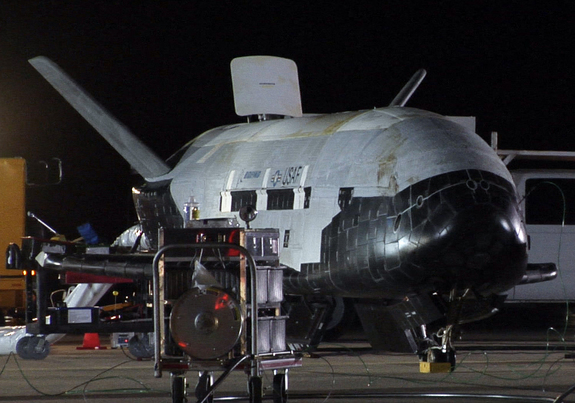X-37B : Putting the Cart Under the Horse
Tuesday’s launch of a Atlas V rocket carrying the X-37B unmanned orbital space plane marked an interesting development in the gradual progression of reusable space flight capability. In the first place, it represented a return to flight of the RL-10 upper stage engine following an October Delta IV launch “anomaly” in which an underperfoming engine led to a longer than planned burn to reach orbit. Although the source has been traced to a fuel leak, the exact cause of the leak has yet to be determined. Nevertheless, after ruling out potential “crossover issues” between the Delta IV’s RL-10 and the slightly different version flown on the Atlas V, the Air Force signed off on this week’s launch.
As for the payload, the small, unmanned space plane partially developed by NASA and subsequently acquired by the Air Force, the re-launch of OTV-1, the first of two X-37B’s, places it in a unique club with the Space Shuttle Orbiters as the world’s only reusable orbital spacecraft to have been reflown. Given that much about the program is classified, it’s not possible to assess the relative value of the program in terms of its specific mission. We also don’t have a clear idea whether or not the repair and refurbishment effort in-between flights marks it as an advancement in improving the operational costs of re-using spacecraft or leaves it on par with the Shuttle, after accounting for the obvious size and complexity differences. What we do know at this point, is that assuming a successful return from orbit, the X-37B, in completing two complete trips to space, would seem to indicate that U.S. has retained and is applying some of the lessons regarding winged spaceflight learned over the course of the Shuttle program. Hopefully, some of that expertise will pass through the filter of secrecy, and benefit other related spacecraft, notably Sierra Nevada’s Dream Chaser. It is after all not the fact that we can recover and reuse spacecraft, but the skill to do so affordably, what Elon Musk terms to as “rapid reusability” which will have lasting significance.
On the other side of the ledger, and seen not from a programmatic perspective, but from the point of view of overall progression towards a robust, expanding and affordable launch industry, it seems amazingly shortsighted, to the point of being absurd, that the United States government has now developed and flown two series of re-usable winged spacecraft, without making any progress, or even really any attempt, at improving the other end of the stack, a re-usable first stage booster which could leverage the entire industry. The disparity is particularly noteworthy when one considers the launch cost of the Atlas V 501 rocket, which depending on how you assign its share of the Launch Capability Contract (subsidy) easily exceeds $200 million for this mission alone. Throw in the fact that it is powered by a Russian RD-180, staged combustion main engine which is an impressive technology we use, but a after a decade of doing so have not sought to replicate or improve, and it is possible to draw the conclusion that for all the “wow” factor in the X-37B, we are not only still putting the cart in front of the horse, he is standing on it.



